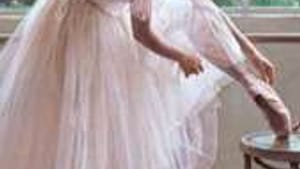Stay in the Loop
BSR publishes on a weekly schedule, with an email newsletter every Wednesday and Thursday morning. There’s no paywall, and subscribing is always free.
So you want to be a dance critic?
How to write a dance review

The New York Times Book Review's "How-To" issue (July 29) provoked a response from the arts writer Molly Templeton, who issued a call for "how-to" pieces by women writers to offset the Times Book Review's own woefully gender-imbalanced section. My contribution follows.
How to write a dance review
First, go to the theater with an open mind and heart. Read the program notes for clues concerning what you are about to see and who will be performing.
Watch the entire concert: the mise-en-scène, the costumes, the quality of the dancing, the lighting. Listen to the music, the audience— do you hear a buzz going on about some aspect of the show? (Also, find out what mise-en-scène means.)
Glean the choreographer's intention. What was he/she trying to accomplish? Was the intention met? If so, how and to what degree?
Take notes if you have a head like a sieve, as I do. (I rarely wind up looking at my notes, but the act of noting what might be important helps me to remember it.)
Once home, set yourself up with some Mexican Coke (the imported kind made with cane sugar, not fructose, that you get for $1.50 from your local bodega), some chips of choice, that slice of pizza you saved from the other day and/or cookies. It could be a long and difficult night and if your deadline is 11 a.m., you want to have a clean review ready by then.
Driving editors crazy
Write twice as much as your publication allows before conking out for a few hours. If you've been writing on your laptop in bed, never mind the crumbs. As you roll over them, they'll wake you in time to peruse review and slash everything but what you really want left on the page before your editor can do so.
This precaution will drive editors crazy— especially the copy editors, who need to work that much harder to justify their jobs.
Of course, it helps if you've been looking at all kinds of dance for 20 to 40 years. Like a sports writer, you know who all the players are, you know their records and you can spew out the high points of their careers. You recognize the difference between choreographic plagiarism, homage or spoof. So if you find yourself at a loss for what to write about the actual choreography or other aspects of the work, the use of such background expertise will create the impression that you are contextualizing— a skill greatly valued by the academic-minded dance critics in our circles.
Why pay?
Dance critics have circles? You bet. We even have an international organization called the Dance Critics Association. We meet in conference annually to discuss how to write criticism, the woeful fact that there are only two "staff" dance critics left at U.S. daily newspapers (while papers in the U.K., a country of only 40 million, still have dozens on staff) and such other topics as what makes a work "review-worthy" and, of course, the shrinking list of publications that will still pay for a review.
Because, publishers now figure, since so many bloggers are out there doing it for nothing, why pay anyone?
But you needn't worry about these issues if you just follow the few simple rules I offer above. You can sit down to blog a review about your best friend's concert— how great, how awesome, how amazing it was— or any other empty descriptives that your professional fairy god-editor would never let you get away with.
Any more than she would permit a preposition at the end of a sentence. Or a sentence fragment.♦
To read responses, click here.
To read a rejoinder by Dan Rottenberg, click here.
How to write a dance review
First, go to the theater with an open mind and heart. Read the program notes for clues concerning what you are about to see and who will be performing.
Watch the entire concert: the mise-en-scène, the costumes, the quality of the dancing, the lighting. Listen to the music, the audience— do you hear a buzz going on about some aspect of the show? (Also, find out what mise-en-scène means.)
Glean the choreographer's intention. What was he/she trying to accomplish? Was the intention met? If so, how and to what degree?
Take notes if you have a head like a sieve, as I do. (I rarely wind up looking at my notes, but the act of noting what might be important helps me to remember it.)
Once home, set yourself up with some Mexican Coke (the imported kind made with cane sugar, not fructose, that you get for $1.50 from your local bodega), some chips of choice, that slice of pizza you saved from the other day and/or cookies. It could be a long and difficult night and if your deadline is 11 a.m., you want to have a clean review ready by then.
Driving editors crazy
Write twice as much as your publication allows before conking out for a few hours. If you've been writing on your laptop in bed, never mind the crumbs. As you roll over them, they'll wake you in time to peruse review and slash everything but what you really want left on the page before your editor can do so.
This precaution will drive editors crazy— especially the copy editors, who need to work that much harder to justify their jobs.
Of course, it helps if you've been looking at all kinds of dance for 20 to 40 years. Like a sports writer, you know who all the players are, you know their records and you can spew out the high points of their careers. You recognize the difference between choreographic plagiarism, homage or spoof. So if you find yourself at a loss for what to write about the actual choreography or other aspects of the work, the use of such background expertise will create the impression that you are contextualizing— a skill greatly valued by the academic-minded dance critics in our circles.
Why pay?
Dance critics have circles? You bet. We even have an international organization called the Dance Critics Association. We meet in conference annually to discuss how to write criticism, the woeful fact that there are only two "staff" dance critics left at U.S. daily newspapers (while papers in the U.K., a country of only 40 million, still have dozens on staff) and such other topics as what makes a work "review-worthy" and, of course, the shrinking list of publications that will still pay for a review.
Because, publishers now figure, since so many bloggers are out there doing it for nothing, why pay anyone?
But you needn't worry about these issues if you just follow the few simple rules I offer above. You can sit down to blog a review about your best friend's concert— how great, how awesome, how amazing it was— or any other empty descriptives that your professional fairy god-editor would never let you get away with.
Any more than she would permit a preposition at the end of a sentence. Or a sentence fragment.♦
To read responses, click here.
To read a rejoinder by Dan Rottenberg, click here.
Sign up for our newsletter
All of the week's new articles, all in one place. Sign up for the free weekly BSR newsletters, and don't miss a conversation.

 Merilyn Jackson
Merilyn Jackson